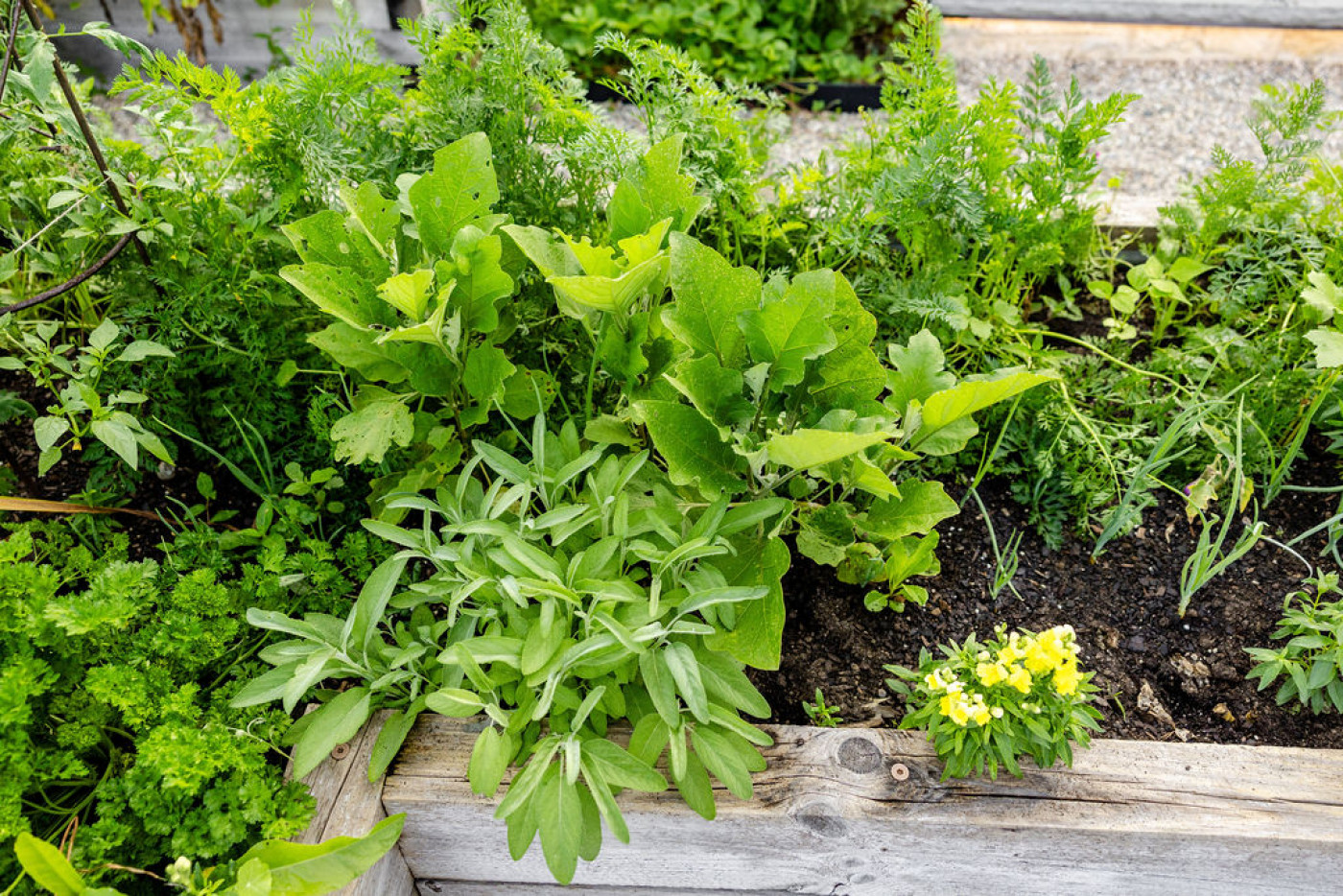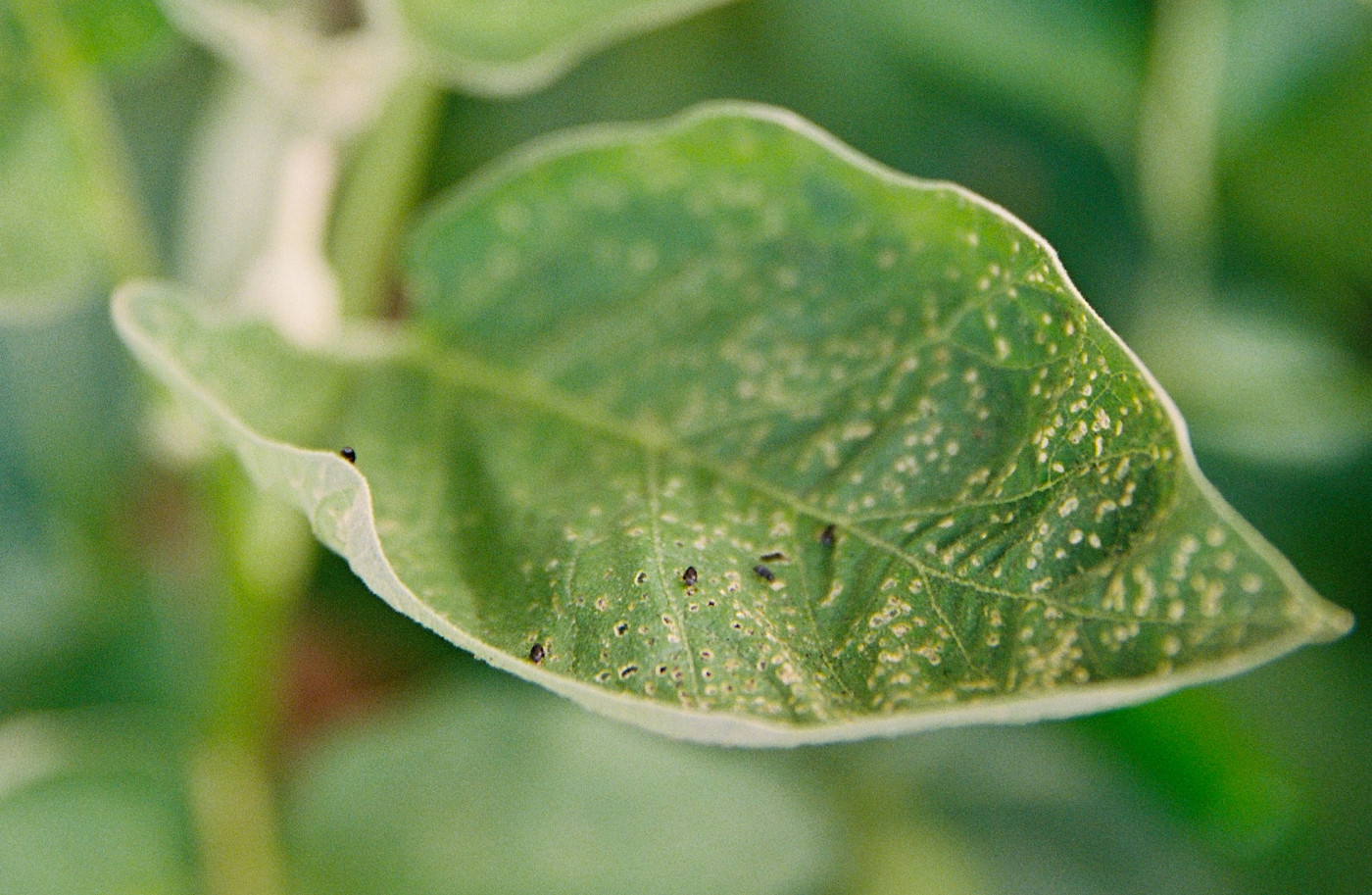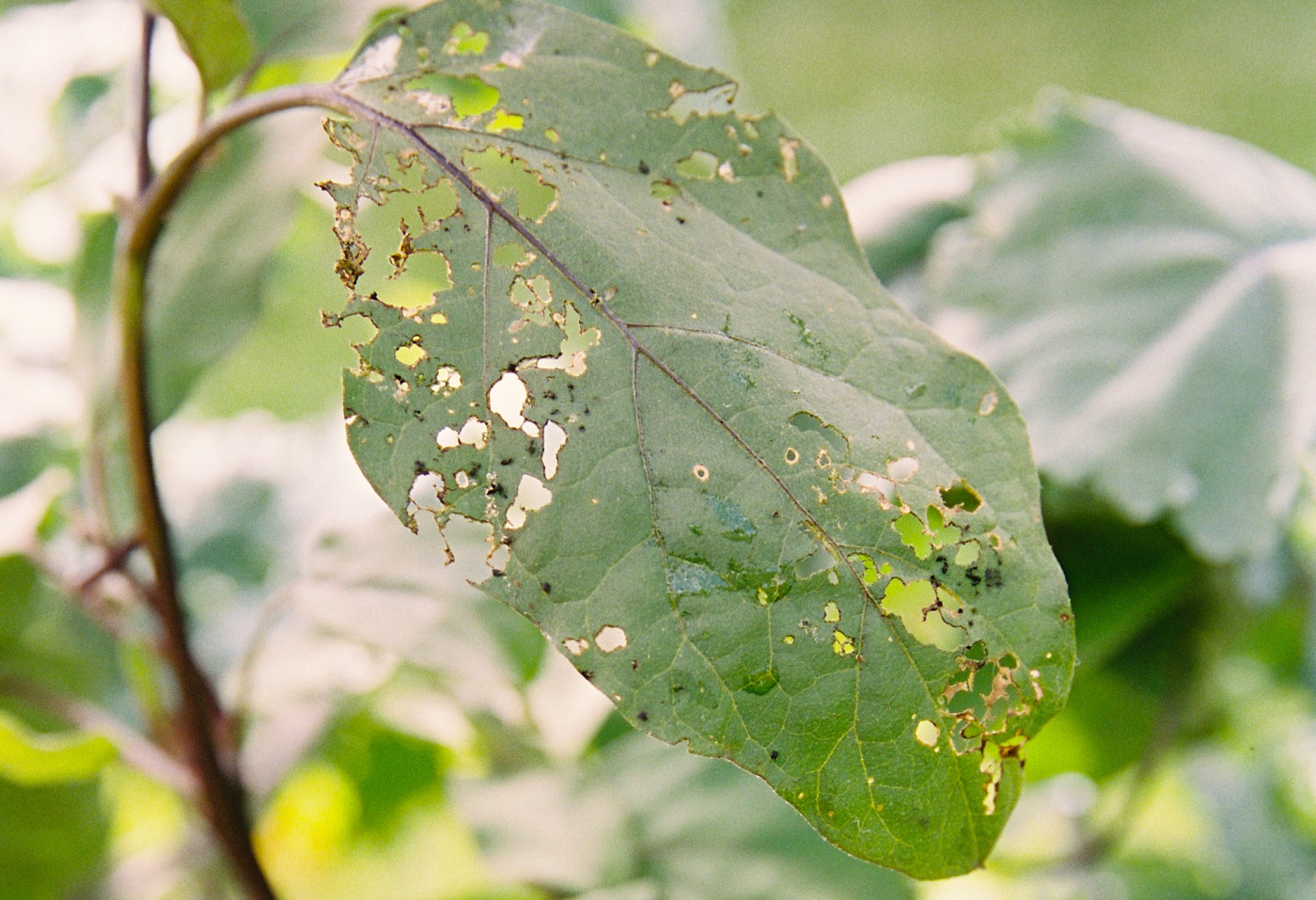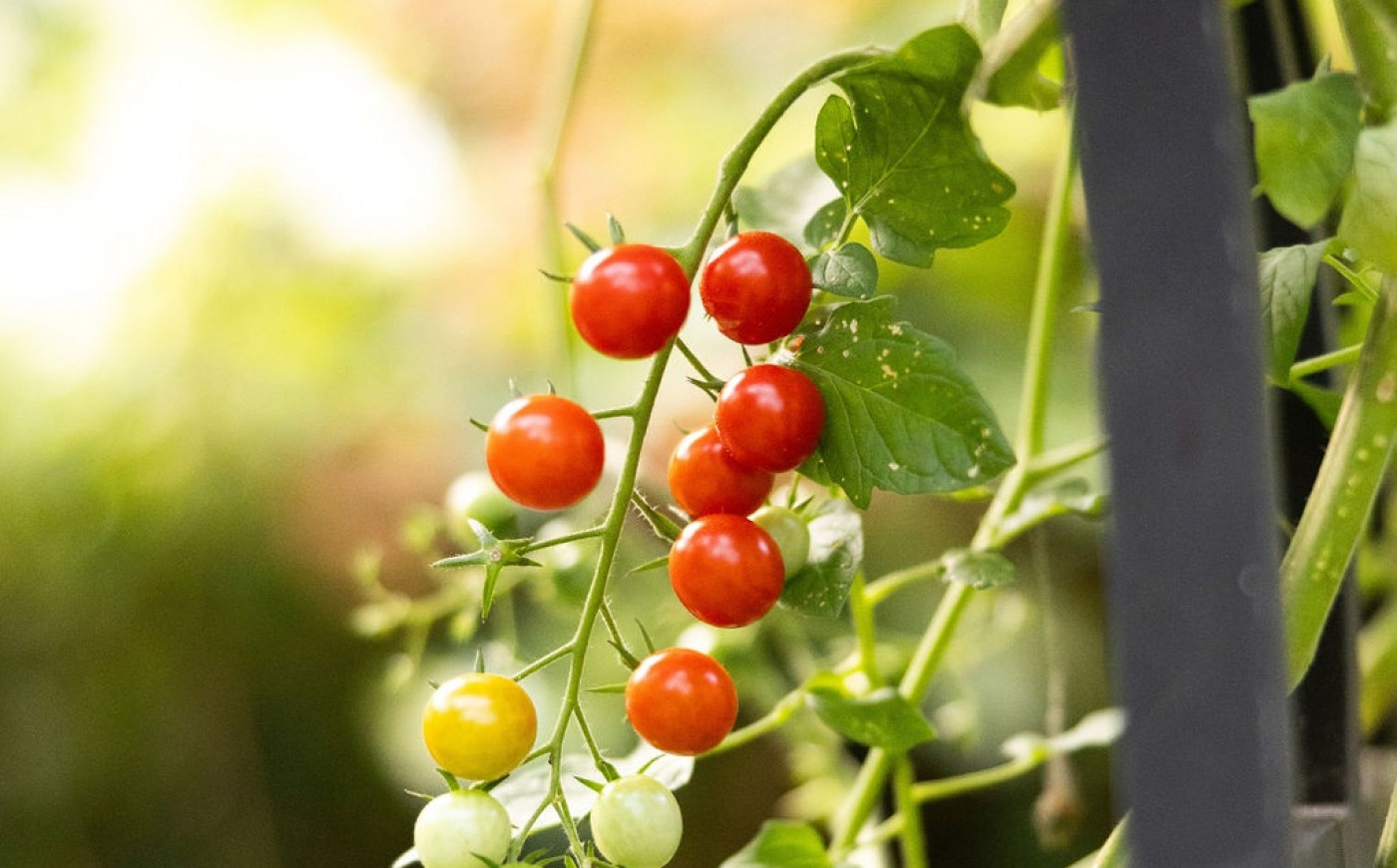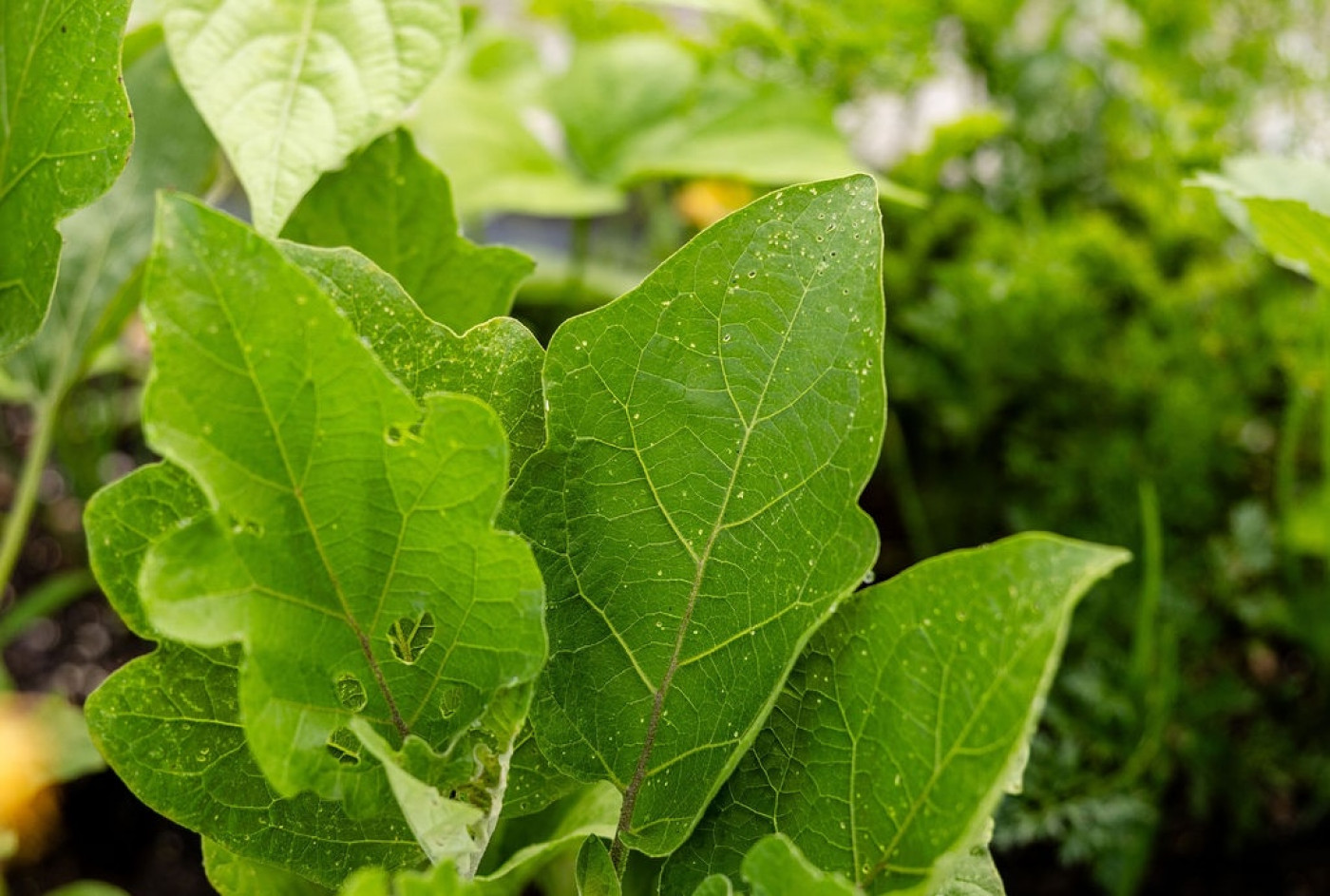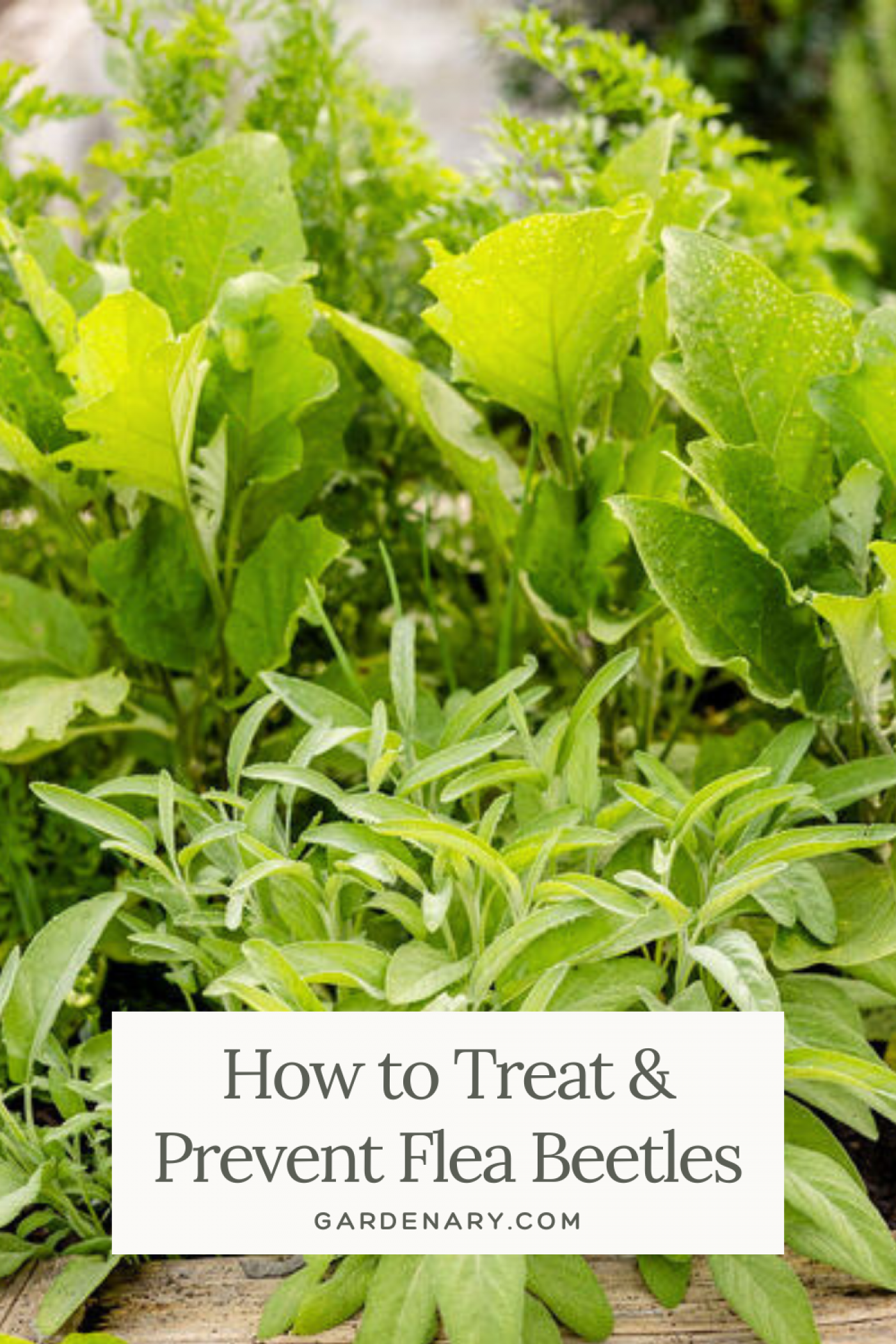Is Your Garden Under Attack?
Aphids and hornworms and squirrels, oh my! There may not be lions and tigers and all the rest coming for your garden, but there are plenty of little critters that can do some serious damage to your edible plants.
Flea beetles are one of these little pests, and they tend to attack things like potato and eggplant plants that are typically more low maintenance in the kitchen garden.
The good news is, they're fairly easy to deal with as long as you're willing to be patient and take action over the next 10 to 14 days.
Let's look at signs that flea beetles are attacking your plants and what you can do about it.
At a Glance
- Flea beetles are shiny little black or bronze bugs that chew holes in the leaves of your plants (adults) and feed on the roots of seedlings (larvae).
- A simple five-step routine can be used to organically treat flea beetles without turning to harsh chemical sprays.
- Strategies to control flea beetles in your vegetable garden in the future include covering seedlings with garden mesh, companion planting with flowers and herbs, and using trap crops.
Gardenary's Organic Pest Control Method
Stop fighting pests. Instead, start gardening with them in mind. No panic. No harsh sprays. No endless guessing. Just a thriving, abundant garden that practically protects itself. With the Organic Pest Control Method, you’ll learn the exact steps I take to grow naturally and confidently, season after season.

What Are Flea Beetles?
Flea beetles are shiny little black or bronze bugs with large back legs that they use for jumping around (like fleas). When I say little, I mean teeny tiny, just 1/16 to 1/8 inch (1.5 to 3 mm) long.
They like to overwinter in your garden by hiding under plant debris and mulch, and then they'll become their most active little selves in the spring.
If enough adult flea beetles decide to munch on your plants, they can cause the leaves to wilt and stunt the growth of the plant. Their babies (little white larvae) chew on the roots of your seedlings.
Flea beetles cause the most damage to younger plants. Once a plant is mature, it typically has enough leaves that it can handle this type of pest pressure, unless there's a severe infestation.
What Plants Are Attacked by Flea Beetles?
Flea beetles seem to like plants in the Brassica family (think broccoli, cabbage, radishes, and kale) and the Solonaceae family (think tomatoes, peppers, and eggplants).
Overall, flea beetles are most likely to attack the following plants:
- arugula
- beets
- broccoli
- cabbage
- cauliflower
- cucumbers
- eggplant
- kale
- lettuce
- peppers
- potatoes
- radishes
- spinach
- sweet corn
- tomatoes
What Does Flea Beetle Damage Look Like?
The first sign you've got these pesky little critters in your garden will be dozens of small, round or irregular-shaped holes on the leaves of your plants. Some gardeners call these "shot holes." Not all holes go all the way through the leaves, which gives leaf surfaces a mottled appearance.
Flea beetles themselves are small, but not so small that you can't see them if you inspect the leaves of your plants. Once you start looking, you'll likely come across a whole little pest colony.
You may also notice stunted growth in your seedlings from the larvae feeding on their roots. Seedlings are particularly vulnerable because flea beetles become active in the spring, just as you're planting your garden for the season. Mature plants can normally withstand damage. But in the case of severe infestations, even mature plants may begin to wilt.
Like aphids, flea beetles can transmit plant diseases like blight and wilt.
Flea Beetle Lifecycle
- Adults overwinter in soil or garden debris and emerge in spring once the temps rise above 50°F (10°C).
- Females lay eggs in the soil near host plants.
- Larvae feed on plant roots for several weeks before pupating.
- Multiple generations may occur through the growing season.
Naturally protect your garden while adding beauty and biodiversity.
This curated seed set includes powerful herbs and flowers known to deter pests and attract beneficial pollinators, creating a balanced, organic ecosystem in your garden. Ideal for gardeners who want to grow without chemicals, the Gardenary Pest Control Collection features vibrant, fragrant plants that both beautify and defend your beds.
Head's Up: This article contains Amazon affiliate links. When you purchase through links on this site, we may earn a small commission.
Steps to Get Rid of Flea Beetles
Step 1: Remove Pests by Hand
The first thing to do is simply remove as many flea beetles by hand as possible. I use my gloved hands to squish them the minute I spot them on a leaf. It's a gross but easy way to take care of visible pests.
It's also a good idea to give your leaves a good, hard soak with the water hose. You normally don't want to spray the leaves of plants, but in this case, the need to remove pests exceeds the risk of fungal disease or mildew from wet leaves.
Repeat this step every day until the issue is resolved.
Step 2: Prune Affected Leaves
The second step is to remove the leaves most affected by these pests. These leaves should be thrown in the trash instead of tossed into the compost pile used to make organic matter for the garden.
Remember the golden rule of pruning: Never remove more than a third of the plant at one time.
Step 3: Add Compost to Base of Affected Plants
Once you've pruned the damaged leaves, add some fresh compost around the base of the plant. This compost will give a little nutrient boost to the plant and help support it as the plant works to fight off the pests and produce new leaves.
Check the leaves every two or three days to see if there are still signs of flea beetles. Consistency is really the key when you're dealing with any kind of pest infestation. You just need to stay on it.
Step 4: Spray Homemade Insecticidal Soap
If there are still signs of flea beetles, then it's time to treat the plant with Dr. Bronner's Liquid Castile Soap. You'll dilute this soap with water (1 tablespoon per 1 quart, or 32 ounces, of water) and put it in a spray bottle. Come out in the evening and spray the leaves of affected plants heavily.
If you're expecting rain, wait until the rain has passed before you spray. After a few applications, spray the plants down with water to rinse off any remaining soap residue.
Castile soap works best on soft-bodied pests like aphids, but it also targets the exoskeletons of smaller pests like flea beetles. It causes dehydration, eventually leading to their death without turning to harsh chemicals. It's called a contact insecticide because it only works when it comes into direct contact with the targeted pest.
I always see if Castile soap will control the issue before I move on to something stronger.
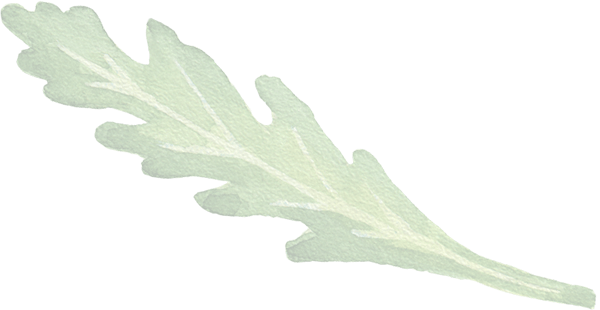

Step 5: Spray Garlic Barrier, If Needed
I recommend turning to garlic barrier if—and only if—Castile soap doesn't seem to be working. Garlic barrier is an oil that smells like garlic, a scent that really turns these pests off. Follow the directions on your product to dilute before spraying.
Spraying with Castile soap or garlic barrier can be a daily thing until you see less bug activity. I've found that within two weeks of following these five steps and checking on my plants daily, I can generally deal with small-scale pest issues.
If, after following these five steps for two weeks, you don't see success, it's time to remove the affected plants from the garden. There's no shame in pulling plants that are struggling. Move on to a plant that hasn't faced so much stress and that will thrive in your garden.
How to Prevent Flea Beetle Issues in the Future
We can borrow these five strategies from Integrated Pest Management (IPM) to keep flea beetle populations under control:
Clean Your Garden Before Winter
It's good practice to regularly clean the surface of your soil and remove old plant debris, especially before wintertime. If flea beetles don't have convenient little places to hide, they won't want to hang out in your garden and be ready to launch their attack come spring. This is why I don't like using wood mulch in my vegetable garden—it just gives pests a place to hide.
Use a Physical Barrier
The second way to prevent flea beetle issues is to cover transplants and seedlings (the plants most vulnerable to attack) with garden mesh or floating row covers. A simple physical barrier prevents flea beetles (and so many other pests) from entering your garden.
Of course, if they're already hanging out in the soil, then you're just going to trap them inside with your plants, which is why cleaning the soil surface is so important.
You can remove the barrier once your plants are a little more mature, or simply lift it up during the daytime when your fruiting plants like tomatoes and eggplants need to be pollinated.
Companion Plant with Herbs
Companion planting is a simple, all-natural way to deter flea beetles. Aromatic herbs like sage, mint, and chives can repel or confuse pests with their strong scents. Compounds in sage actually disrupt a flea beetle's sensory receptors. Mint and chives also repel flea beetles (I recommend growing mint in its own container near the plants you need to protect).
Add Flowers Around Garden Borders
Flowering plants attract beneficial insects like ladybugs, hoverflies, and parasitic wasps, all of which feed on flea beetles. Sweet alyssum is a great flower to attract tons of garden good guys. Also, let herbs like dill and cilantro flower. Their pretty little blooms are magnets for pest predators.
Plant Trap Crops
A trap crop is something you plant as a decoy to distract pests that would otherwise attack your main garden crop. Both nasturtiums and radishes can be used to keep flea beetles off your kale, eggplant, or tomato plants.


Don't Stress About Pests
The good news is that most of the plants in your garden aren't super attractive to flea beetles. Checking on your garden regularly is the best way to spot signs of these little critters early and prevent them from becoming a bigger issue.
Here's your reminder that pests are just a part of gardening. Take any bugs that show up as a sign you're growing something really delicious and worthy of eating!
Just because pests are inevitable doesn't mean they have to win. Check your leaves frequently, be diligent in following these steps, and you'll end up with lots of gardening wins for yourself.
Gardenary's Organic Pest Control Method
Stop fighting pests. Instead, start gardening with them in mind. No panic. No harsh sprays. No endless guessing. Just a thriving, abundant garden that practically protects itself. With the Organic Pest Control Method, you’ll learn the exact steps I take to grow naturally and confidently, season after season.


